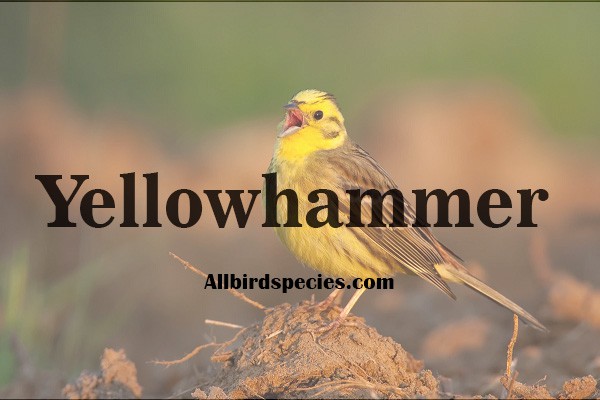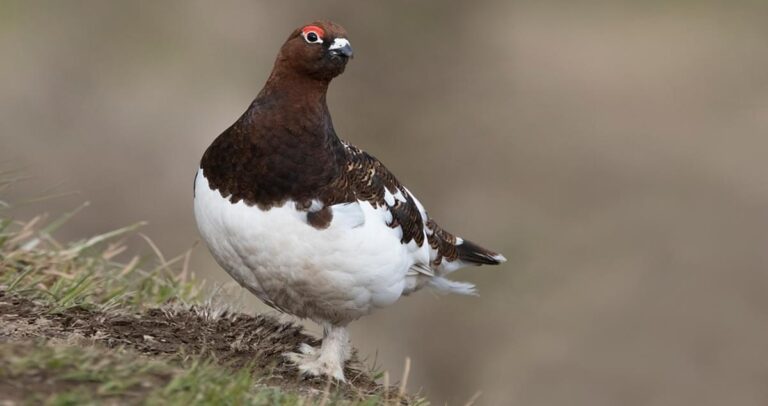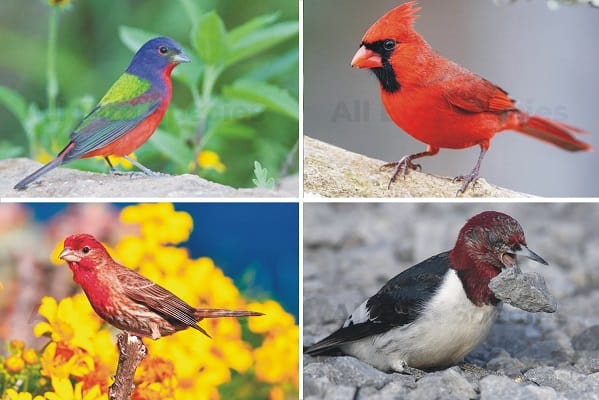Yellowhammer Guide: Habitat, Diet, and Calls
Welcome to our comprehensive guide on the Yellowhammer! Have you ever wondered about the fascinating world of these avian wonders? How well do you know their habitat, diet, and distinctive calls? Prepare to be amazed as we delve into the intriguing life of the Yellowhammer and uncover the secrets that make them truly remarkable.
Key Takeaways:
- Discover the Yellowhammer’s preferred habitat and how it adapts to different environments.
- Explore the various foods that make up the Yellowhammer’s diet.
- Learn about the unique calls and sounds the Yellowhammer uses for communication.
- Understand the implications of the Yellowhammer’s habitat and conservation status.
- Gain insight into the breeding habits and reproductive patterns of the Yellowhammer.
Everything You Need to Know About the Yellowhammer
Are you ready to dive into the fascinating world of the Yellowhammer? Here will provide you with a comprehensive overview of this remarkable bird, covering its physical aspect, distribution, diet, breeding habits, and conservation status. Prepare to be amazed by the incredible adaptability and unique characteristics of the Yellowhammer.

The Physical Aspect of the Yellowhammer
The Yellowhammer is a medium-sized bird with distinctive markings that set it apart from its avian counterparts. Its size, coloration, and plumage make it easily identifiable. Let’s take a closer look at the physical features that make the Yellowhammer stand out.
Distribution of the Yellowhammer
The Yellowhammer can be found in various regions across the United States. Its preferred habitats and range of occurrence provide insight into its adaptability and ability to thrive in diverse environments. Let’s explore where you can spot this magnificent bird in the wild.
Diet of the Yellowhammer
The Yellowhammer’s diet is as versatile as its habitat. From seeds to insects and fruits, this bird has developed a diverse palate to sustain its energy and meet its nutritional needs. Discover the culinary preferences of the Yellowhammer and how it manages to find its next meal.
Breeding Habits of the Yellowhammer
When it comes to reproduction, the Yellowhammer showcases intriguing behaviors and patterns. Understanding its nesting habits, courtship displays, and egg-laying rituals gives us a glimpse into the fascinating world of avian reproduction. Let’s explore how the Yellowhammer perpetuates its species.
Conservation of the Yellowhammer
As with many bird species, the Yellowhammer faces various conservation challenges. Understanding its conservation status and the efforts being made to protect its natural habitat is crucial in ensuring the survival of this remarkable bird. Learn more about the conservation initiatives aimed at preserving the Yellowhammer’s future.
The Aspect of the Yellowhammer
Now let’s take a closer look at the physical appearance of the Yellowhammer. These striking birds are known for their vibrant colors and distinctive markings.
The Yellowhammer is a medium-sized songbird, typically measuring about 7 to 8 inches in length. Its wingspan can range from 11 to 12 inches, allowing for graceful flight.
One of the most eye-catching features of the Yellowhammer is its brilliant plumage. Males sport a vibrant yellow head and underparts, while females have a more muted yellow hue. Both genders have brownish-gray upperparts, providing excellent camouflage in their natural habitat.
The Yellowhammer’s key field markings include:
- Yellow head and underparts
- Brownish-gray upperparts
- Distinctive black facial markings
- White patches on wings and tail feathers
Their plumage acts as both a visual display and a form of protection. Their bold colors help them attract mates during the breeding season, while their camouflage allows them to blend in with their surroundings to avoid predators.
With their remarkable aspect and gorgeous plumage, the Yellowhammer is truly a sight to behold in nature’s vibrant tapestry.
| Aspect | Features |
|---|---|
| Size | 7 to 8 inches in length, 11 to 12 inches wingspan |
| Coloration | Yellow head and underparts, brownish-gray upperparts |
| Distinctive Markings | Black facial markings, white patches on wings and tail feathers |
Distribution of the Yellowhammer
Discover the geographical range and preferred habitats of the Yellowhammer in the United States.
The Yellowhammer (Emberiza citrinella) can be found in various regions of the United States, primarily in the Midwest and Northeastern states. It prefers open farmlands, meadows, and grassy areas with scattered trees or shrubs. This adaptable bird is known for its ability to thrive in diverse environments.
Here is a breakdown of the regions where the Yellowhammer is commonly found:
| Region | Habitat |
|---|---|
| Midwest | Farmlands, grassy areas |
| Northeast | Meadows, open fields |
| Plains | Prairies, agricultural lands |
| Appalachian Mountains | Forested areas, mixed habitats |
The Yellowhammer’s distribution may vary slightly depending on factors such as available food sources and nesting opportunities in different regions. However, its overall range covers a significant portion of the United States, making it a familiar sight to birdwatchers and nature enthusiasts.
Diet of the Yellowhammer
When it comes to their diet, Yellowhammers have a diverse palate and are not picky eaters. They primarily feed on seeds, insects, and fruits, making them omnivores. Their adaptability allows them to find food in various habitats, making them resilient and successful in their foraging endeavors.
Yellowhammers have a strong preference for seeds and can often be seen rummaging through grassy areas or agricultural fields in search of tasty treats. They have a particular fondness for grains such as wheat, barley, and oats, as well as various weed seeds.
Insects also play a significant role in the Yellowhammer’s diet. They actively hunt for insects, including beetles, ants, and caterpillars, which provide them with essential protein and nutrients. This insect population control is not only beneficial for the Yellowhammer but also contributes to the overall health of the ecosystem.
Additionally, Yellowhammers enjoy indulging in the occasional fruit feast. They have been observed feeding on berries, such as blackberries and raspberries, as well as small fruits like cherries. This fruit consumption not only supplements their diet but also aids in seed dispersal, as the undigested seeds are later excreted in different locations.
“Yellowhammers are versatile feeders, taking advantage of a wide range of food sources. Their ability to adapt to different habitats and seasonal changes ensures they can find sustenance no matter the circumstances.”
To summarize, the Yellowhammer’s diet consists of seeds, insects, and fruits, allowing them to be flexible and thrive in various environments.
| Food | Description |
|---|---|
| Seeds | Includes grains like wheat, barley, and oats, as well as weed seeds |
| Insects | Beetles, ants, caterpillars, and other insect species |
| Fruits | Berries (blackberries, raspberries) and small fruits (cherries) |
Breeding Habits of the Yellowhammer
When it comes to the breeding habits of the Yellowhammer, these fascinating birds display a variety of interesting behaviors. From their nesting habits to courtship displays and egg-laying patterns, Yellowhammers have a unique way of ensuring the continuation of their species.
Nesting Habits
Yellowhammers typically build their nests in the dense vegetation found in open farmland, woodland edges, or hedgerows. The nests are constructed by the females using various materials such as grass, leaves, and twigs.
These nests are often cup-shaped and strategically positioned in a hidden location to protect the eggs and nestlings from predators. The females carefully line the nests with soft materials, such as feathers or moss, providing a comfortable and secure environment for their young.
Courtship Displays
During the breeding season, male Yellowhammers perform elaborate courtship displays to attract females. These displays often involve the males singing from prominent perches, showcasing their vibrant plumage, and engaging in aerial acrobatics.
The distinctly beautiful song of the Yellowhammer, characterized by a series of bright notes, can be heard throughout their breeding territories. This melodious song serves as a signal to both females and rival males, conveying important information about the male’s fitness and territory ownership.
Egg-laying Patterns
After successful courtship, the female Yellowhammer lays a clutch of eggs in her carefully constructed nest. The typical clutch size consists of 3-6 eggs, which are smooth and glossy in appearance.
The female incubates the eggs for approximately 12-14 days, during which time she rarely leaves the nest. The male assists in the provisioning of food for the female during this period, ensuring she has the necessary energy to incubate the eggs successfully.
Once the eggs hatch, both parents take on the responsibility of feeding and caring for the nestlings. The young Yellowhammers grow rapidly and fledge from the nest after approximately 10-14 days.
| Aspect of Breeding Habits | Details |
|---|---|
| Nest Construction | Constructed by the females using materials such as grass, leaves, and twigs |
| Courtship Displays | Elaborate displays by males, including singing, vibrant plumage, and aerial acrobatics |
| Egg-laying and Incubation | Clutch size typically consists of 3-6 eggs; incubation period of 12-14 days |
| Parental Care | Both parents feed and care for the nestlings until they fledge after 10-14 days |
The breeding habits of the Yellowhammer are a remarkable testament to their adaptability and survival strategies. By understanding these behaviors, we gain a deeper appreciation for the delicate balance of nature and the incredible efforts of these birds to ensure the continuation of their species.
Conservation of the Yellowhammer
The Yellowhammer, an iconic bird known for its vibrant plumage and distinctive song, faces various conservation challenges due to habitat loss and changes in land management practices. Efforts are being made to protect the Yellowhammer’s natural habitat and promote its population growth.
One of the key conservation strategies for the Yellowhammer is the preservation of its preferred habitats, which include open grasslands, farmlands, hedgerows, and woodland edges. These habitats provide essential resources, such as nesting sites, food sources, and protection from predators. Conservation organizations work closely with landowners and farmers to implement sustainable land management practices that benefit the Yellowhammer and other wildlife species.
In addition to habitat conservation, targeted research and monitoring programs help gather valuable data on the Yellowhammer’s population dynamics, breeding success, and migratory patterns. This information guides conservation efforts, enabling scientists and conservationists to better understand the specific needs of the species and develop effective conservation strategies.
Conservation Organizations
Several organizations play a crucial role in the conservation of the Yellowhammer:
- National Audubon Society: Through its various initiatives, the National Audubon Society works to protect bird species, including the Yellowhammer, by conserving and restoring habitats.
- Conservation Volunteers: This organization engages volunteers in habitat restoration projects, contributing to the conservation of the Yellowhammer’s natural environment.
- Wildlife Trusts: With their network of nature reserves, the Wildlife Trusts provide protected spaces where the Yellowhammer and other wildlife can thrive.
By collaborating with these organizations, individuals, and communities can actively contribute to the conservation efforts and promote the welfare of the vibrant and melodious Yellowhammer.
| Conservation Challenges | Conservation Actions |
|---|---|
| Habitat loss due to urbanization and agricultural intensification | Preservation and restoration of preferred habitats through sustainable land management practices |
| Changes in farming practices affecting food availability | Promoting agri-environment schemes that support biodiversity and provide food resources |
| Invasive species competition | Implementing control measures to limit the impact of invasive species on Yellowhammer populations |
| Climate change and its effects on migration and nesting patterns | Monitoring and researching the impact of climate change on Yellowhammer populations and implementing adaptation strategies |
Frequently Asked Questions
Q1: Why is Alabama called the Yellowhammer?
Alabama is called the Yellowhammer because during the Civil War, Alabama soldiers wore uniforms with yellow trimmings, earning them the nickname “Yellowhammers.”
Q2: Are Yellowhammers rare in the UK?
Yellowhammers are not considered rare in the UK; however, their population has declined in recent years due to habitat loss and changes in farming practices.
Q3: What does yellow hammer mean in slang?
In slang, “yellow hammer” can refer to a drink made with rum and pineapple juice, particularly popular in the southern United States.
Q4: What is another name for a Yellowhammer?
Another name for a Yellowhammer is “Emberiza citrinella,” which is its scientific or Latin name.
Q5: What is Alabama’s national bird?
The Northern Flicker, a type of woodpecker, is the official state bird of Alabama.
Q6: How rare is a Yellowhammer?
Yellowhammers are not considered rare, particularly in their native range in Europe and parts of Asia. However, their populations may face local declines due to habitat loss and other factors.






